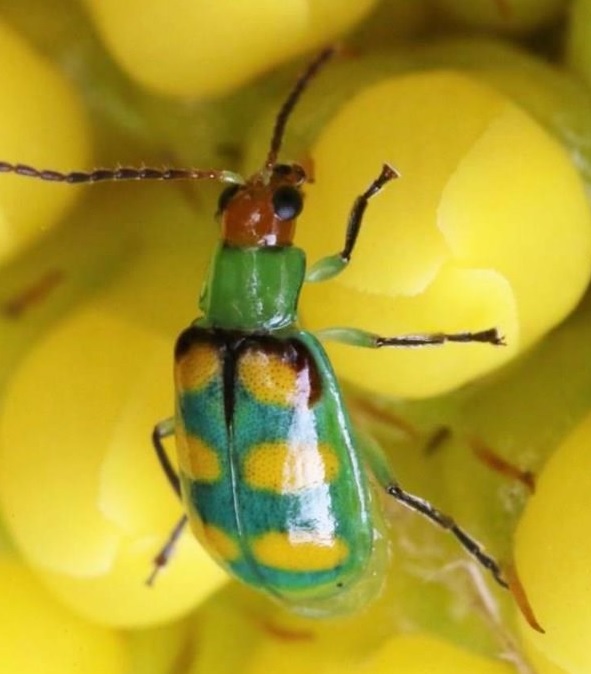Catalogue of traps and pheromones
Download traps and pheromones list

Download document
1.02 mb
Cucurbit beetle larvae feed on the roots of crops. The affected plants of Cucurbit beetle include cucumber, cantaloupe, squash, gourd, pumpkin, corn, soybean, cotton, beans, potato, grape, sweet potato, tomato, cassava, rice, sorghum, wheat, cabbage, amaranth, peanut, watermelon, bell pepper, mulberry, pea, beet, okra, onion, lettuce, and oats.

The cucurbit beetle is also known to transmit several viruses such as comoviruses and different mosaic viruses. There is evidence that Cucurbit beetle is a viral vector for comoviruses, southern bean mosaic virus, mimosa mosaic virus, tymoviruses (such as passionfruit yellow mosaic virus), carmoviruses, and purple granadilla mosaic virus.

Their native land is South America in countries such as Argentina, Bolivia, Brazil, Colombia, Ecuador, French Guiana, Paraguay, Peru, Uruguay and Venezuela. Their current distribution is in Central America including countries such as Costa Rica, Mexico, and Panama.
Each female laid an average of 1164 eggs during her lifetime, starting on day 8 and extending for a maximum of 77 days. Cucurbit beetle becomes active in mid-spring and quickly starts locating host plants for feeding and egg deposition. Females oviposit throughout the field and eggs typically hatch within 6–9 days and can take up to 30 days with under low temperature conditions. Eggs are yellow, oval shaped laid in clusters of 25-50 below leaf surface. After eggs hatch, larvae start feeding on plant roots.


Download traps and pheromones list

1.02 mb
Review our catalogue of pheromons and semiochemicals by chemical name

525.1 kb